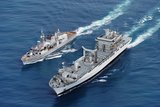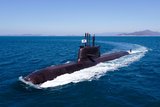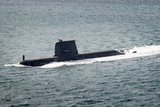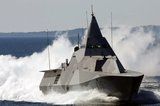Are hypersonics the answer to the Royal Navy's lethality debate?
Future Cruise/Anti Ship Weapon concept graphic. (Image: MBDA)
Speaking at the IISS-hosted First Sea Lord's Sea Power Conference on 5 May, MoD Deputy Chief of the Defence Staff (Financial and Military Capability) Air Mshl Richard Knighton questioned whether hypersonic weapons were the 'optimal solution' for future RN lethality.
The RN has come under criticism for the lack of perceived lethality in the surface fleet, highlighted by the future retirement of the Harpoon Block 1C missiles in 2023 with no immediate replacement.
British politicians on the UK Parliament's Defence Committee have branded RN ships 'porcupines' – well defended but lacking the ability to strike.
Knighton said during a
Already have an account? Log in
Want to keep reading this article?
More from Naval Warfare
-
![Is South Korea finally being taken seriously for Western submarine programmes?]()
Is South Korea finally being taken seriously for Western submarine programmes?
South Korean shipbuilders are beginning to make their mark beyond Asia, competing for major North American and European submarine programmes and becoming serious contenders on a global scale.
-
![AUKUS Pillar 2 could narrow focus to “four key areas” says UK official]()
AUKUS Pillar 2 could narrow focus to “four key areas” says UK official
Few concrete ideas have emerged so far on which “advanced capabilities” will be brought forward under Pillar 2 of the AUKUS partnership, but the Pentagon’s review of the programme could bring more clarity.
-
![Sweden’s decision on four new warships inches closer as it eyes UK, France and Spain]()
Sweden’s decision on four new warships inches closer as it eyes UK, France and Spain
Sweden decided last year that it wanted a significantly larger warship for its Luleå Class programme than originally planned, with three likely contenders that could potentially deliver within the country’s tight schedule.






















